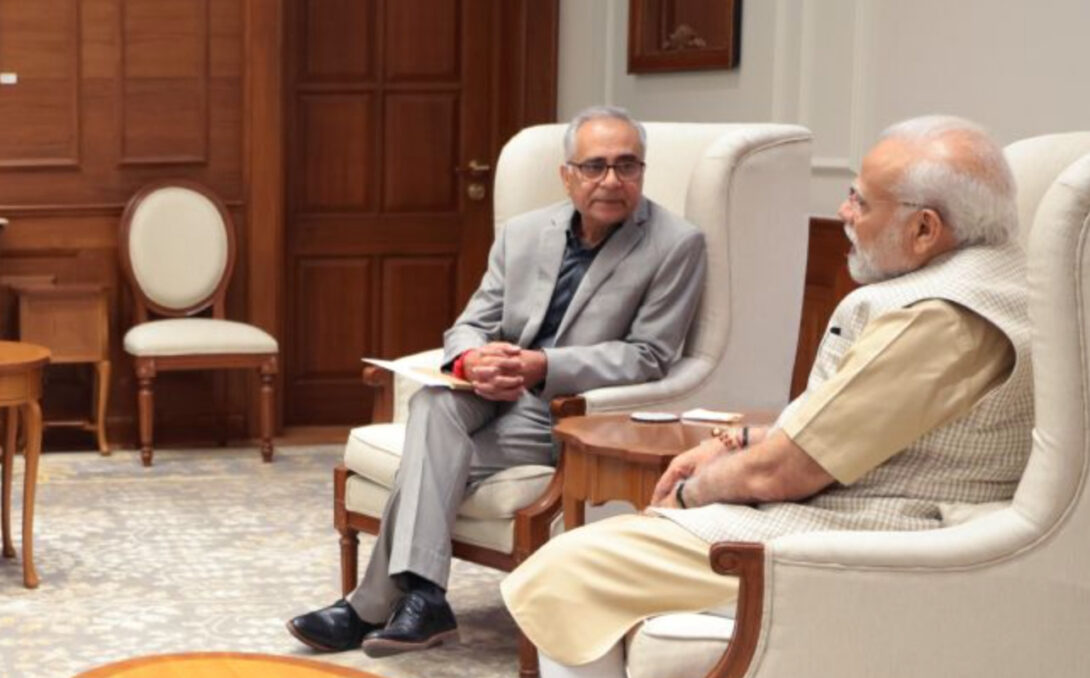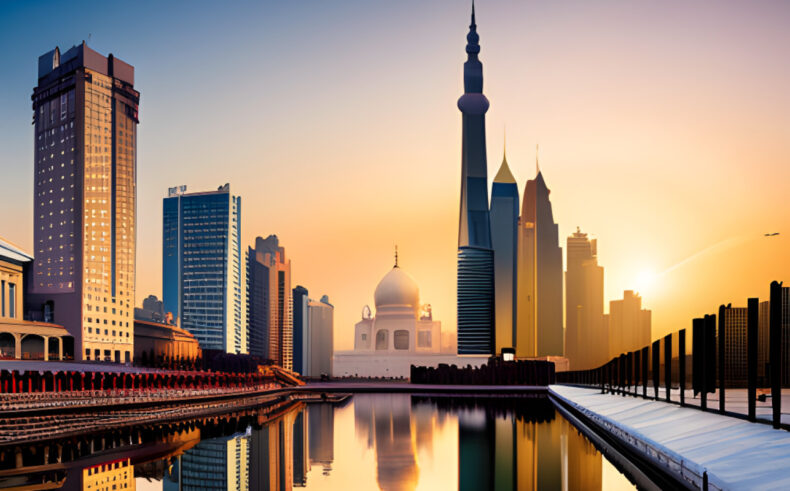From the struggles of 1947’s independence to present-day prosperity, India is on a transformative path. With a bold vision to achieve developed nation status by 2047, its 100th year of independence, this article explores India’s remarkable journey towards economic growth, social development, and global prominence.
Table of Contents
In a candid interview with Press Trust of India (PTI), Prime Minister Narendra Modi laid out his visionary roadmap for India’s remarkable transformation by the time it reaches its centennial year of independence in 2047. This ambitious vision, encompassing democracy, demography, diversity, and development, serves as a comprehensive blueprint for the nation’s future. Prime Minister Modi’s articulation of this vision is not just a glimpse into the future; it’s a call to action for a nation poised on the cusp of history.

The interview, conducted against the backdrop of India’s remarkable progress since 2014, provides valuable insights into the Prime Minister’s perspective on the nation’s trajectory and the key milestones achieved along the way. From economic growth and infrastructure development to social inclusion and sustainability, the interview offers a glimpse into India’s journey toward becoming a developed nation. Let’s delve deeper into Prime Minister Modi’s vision for India in 2047 and trace the path that has brought the nation to this transformative juncture.
India at Independence (1947)
In 1947, India’s tryst with destiny brought the promise of freedom but also the enormous challenge of nation-building. The legacy of colonial exploitation had left a fractured socio-economic landscape. Poverty afflicted a significant portion of the population, and access to education and healthcare was a privilege limited to the fortunate few. The economy languished, and infrastructure development was in its infancy.
India in 2014:
Fast forward to 2014 when Prime Minister Narendra Modi took the helm of the nation. India had made commendable progress, but critical challenges persisted. Economic growth had occurred, yet poverty remained a pervasive issue, impacting millions. Infrastructure development was underway, yet accessibility gaps persisted, especially in rural areas. Education and healthcare had improved, but disparities endured, and corruption still posed a formidable challenge in various sectors.
India Today (2024)
In the present year, India finds itself on the precipice of unprecedented transformation. Under Prime Minister Modi’s resolute leadership, the nation has experienced an economic renaissance. India’s economy has consistently grown at an impressive average rate of 7.5% per year since 2014, positioning it as one of the world’s fastest-growing economies. This economic resurgence has led to a substantial increase in per capita income and a substantial reduction in poverty.
Infrastructure development has been a top priority, with substantial investments in roads, railways, airports, and digital connectivity. This concerted effort has improved accessibility and facilitated trade and commerce, both within the country and globally.
India’s education and healthcare systems have witnessed remarkable improvements. The literacy rate has risen, and more children are attending school. Initiatives such as Ayushman Bharat have enhanced healthcare access and quality, ensuring that every rupee meant for the disadvantaged reaches them promptly, thanks to India’s impressive digital public infrastructure.
Social development has been at the forefront, addressing issues such as poverty, inequality, and discrimination. Initiatives like Pradhan Mantri Jan Dhan Yojana (PMJDY) and Pradhan Mantri Kaushal Vikas Yojana (PMKVY) have aimed to uplift marginalized communities and provide skills and employment opportunities.
Innovation and entrepreneurship have flourished, with initiatives like Startup India fostering a thriving startup ecosystem. Sustainability is another key focus, as India invests in renewable energy and pollution reduction.
Modi’s Vision for India
The vision for India in 2047, as articulated by Prime Minister Narendra Modi, is to transform the nation into a developed country by the time it commemorates its 100th year of independence. This visionary perspective encompasses several key elements:
- DemocracyIndia’s vibrant democracy remains at the core of this vision. It emphasizes the importance of upholding the rule of law, protecting citizens’ rights, and ensuring inclusivity in decision-making processes. Democracy provides the framework for India’s development journey.
- Demography India’s demographic dividend, characterized by a large and youthful population, is viewed as a tremendous asset. The vision seeks to harness this demographic advantage by providing education, skills, and employment opportunities to leverage this vast workforce for economic growth.
- Diversity India’s rich cultural and social diversity is considered a source of strength. The vision underscores the celebration and preservation of this diversity, ensuring that every community, regardless of its size or location, actively contributes to the nation’s development.
- Development The fourth ‘D’ in this vision is ‘Development.’ It serves as the driving force behind the transformation. Development encompasses various facets, including robust economic growth, comprehensive infrastructure development, fostering innovation, promoting sustainability, ensuring social inclusion, and improving the quality of life for all citizens.
The overarching goal is to eradicate poverty, provide world-class healthcare and education systems accessible to all, eliminate corruption, promote social harmony, and preserve India’s rich cultural heritage while safeguarding the environment. This vision extends beyond India’s borders, with initiatives like the International Solar Alliance exemplifying the nation’s commitment to global sustainability.
The Trajectory Towards 2047:
As India approaches its 100th year of independence in 2047, the trajectory is marked by optimism and determination. The nation aspires to be a developed country where poverty is significantly reduced, healthcare and education are of world-class quality, and corruption and social divisions are addressed comprehensively. The goal is to achieve these milestones while preserving the nation’s rich cultural heritage and protecting the environment.
Prime Minister Modi’s vision for India in 2047 is a comprehensive plan for the nation’s future, founded on the principles of democracy, demography, diversity, and development. It aspires to elevate India to the status of a developed nation, setting a global example of inclusive and sustainable growth. India’s journey from independence in 1947 to the present is a testament to its resilience and determination.
From a nation grappling with poverty and colonial legacies, it has evolved into one of the world’s fastest-growing economies, with a focus on inclusivity, sustainability, and social development. The trajectory towards 2047 is a testament to India’s unwavering commitment to realizing Prime Minister Modi’s visionary goal of becoming a developed nation, not just for itself but as an inspiration for the world.












